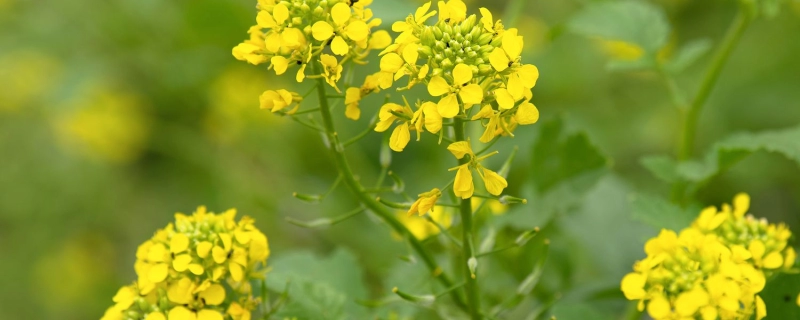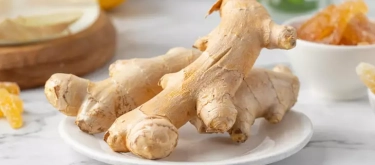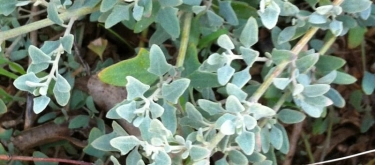Mustard: Taste, Uses, Benefits and Harm
Mustard is a versatile condiment derived from the seeds of the mustard plant (typically Brassica or Sinapis species). Celebrated for its sharp, tangy flavor and diverse culinary applications, mustard has been a staple in kitchens worldwide for centuries. From mild yellow varieties to robust, spicy brown and black mustards, this condiment not only enhances the taste of dishes but also offers potential health benefits. This article provides a comprehensive exploration of mustard’s sensory attributes, in-depth flavor analysis, culinary applications, nutritional insights, and practical tips for selection and storage. Additionally, it covers how best to use mustard and addresses potential drawbacks when used in excess.

Taste, Aroma, Texture, and Visual Appearance
Taste:
Mustard is known for its distinct sharp, tangy, and sometimes spicy flavor profile.
- Flavor Description: Upon tasting, mustard delivers an initial burst of pungency that can range from mildly tangy to intensely spicy, depending on the variety. Its flavor can be both bright and robust, often leaving a lingering heat on the palate.
Aroma:
The aroma of mustard is equally distinctive and invigorating.
- Aromatic Description: It exudes a sharp, peppery scent with herbal and slightly fruity nuances that reflect the natural essence of the mustard seeds.
Texture:
Texture plays a key role in mustard’s culinary versatility.
- Texture Description: Mustard can be found in various forms—from smooth, creamy spreads to coarse, grainy pastes. The texture influences how the flavor is released, whether as a uniform spread or with bursts of whole seed flavor.
Visual Appearance:
Mustard varies widely in appearance based on its type and preparation.
- Visual Description: Classic yellow mustard is bright and vivid, while brown or Dijon mustards have a deeper, more muted hue. The consistency can range from thin and liquid to thick and pasty, often reflecting its intended culinary use.
In-depth Flavor Analysis of Mustard
Mustard’s flavor complexity arises from its natural compounds and processing methods:
- Pungency and Spiciness:
The primary flavor component, allyl isothiocyanate, is responsible for the characteristic heat and pungency in mustard. This compound activates the nasal passages and enhances the overall sensory experience. - Acidic Balance:
The addition of vinegar or other acidic ingredients in prepared mustards balances the heat, contributing to a tangy profile that enhances flavor depth. - Sweet and Mild Notes:
Some varieties incorporate sweeteners or have a naturally milder taste, providing a more rounded flavor that can complement a variety of dishes. - Herbal and Earthy Undertones:
Depending on the seed variety and additional spices, mustard may also offer subtle herbal or earthy notes, adding complexity and versatility.
Culinary Applications of Mustard
- Primary Uses:
Mustard is an essential condiment and ingredient across numerous cuisines. - Popular Applications:
- Condiments: Serve mustard as a dipping sauce or spread for sandwiches, hot dogs, and burgers.
- Salad Dressings: Incorporate mustard into vinaigrettes to add a zesty kick.
- Marinades and Glazes: Use mustard in marinades to tenderize meats and as a base for glazes to enhance flavor complexity.
- Cooking Ingredient: Add a spoonful to soups, stews, and sauces for an extra layer of flavor.
- Gourmet Recipes: Use artisanal mustards, like Dijon or whole-grain mustard, in fine dining dishes and fusion cuisine to balance rich, savory flavors.
- Ideal Pairings:
Mustard pairs well with meats (such as pork, beef, and chicken), cheeses, vegetables, and even fruits like apple and pear. Its acidity and spice complement creamy dressings, tangy pickles, and robust sauces.
Selection and Storage of Mustard
- Selecting Mustard:
Choose mustard based on your flavor preference and culinary needs. For a classic, mild tang, opt for yellow mustard; for more complexity, consider Dijon or whole-grain varieties. Ensure the product has a vibrant color and fresh aroma. - Storage Recommendations:
Store mustard in a cool, dark place, preferably in the refrigerator after opening, to maintain its flavor and prevent spoilage. Always keep it tightly sealed to avoid contamination and moisture absorption.

Quick Facts About Mustard
- Historical Staple:
Mustard has been used since ancient times, with origins tracing back to early civilizations. - Variety:
Available in numerous forms, including yellow, Dijon, whole-grain, and spicy brown mustards. - Flavor Enhancer:
Enhances and balances the flavors of a wide range of dishes. - Culinary Versatility:
Used as a condiment, in sauces, dressings, marinades, and even in baking. - Nutritional Role:
Mustard seeds are rich in antioxidants and have anti-inflammatory properties. - Low-Calorie:
Mustard is a low-calorie addition that can boost flavor without significantly increasing energy intake. - Global Reach:
Widely enjoyed across many cultures and cuisines worldwide. - Economic Importance:
Mustard is an affordable, accessible spice that plays a key role in both everyday meals and gourmet dishes.
Benefits of Mustard
- Flavor Enhancement:
Elevates the taste of food by balancing sweetness, acidity, and spiciness. - Antioxidant Properties:
Contains natural antioxidants that may help reduce inflammation and support overall health. - Digestive Aid:
Mustard seeds can stimulate digestive enzymes and improve gut function. - Low-Calorie Additive:
Provides significant flavor enhancement without adding many calories. - Versatile Nutritional Profile:
Rich in selenium, magnesium, and omega-3 fatty acids, mustard supports metabolic and immune functions. - Culinary Flexibility:
Its varied forms and flavor profiles make mustard adaptable to many recipes. - Appetite Stimulation:
The pungency of mustard can stimulate appetite and enhance the dining experience. - Cultural Heritage:
Mustard’s long history in global cuisine highlights its enduring value and versatility.
Additional Nutritional Insights and Unique Varietal Details
- Core Composition:
Mustard is primarily composed of mustard seeds, which contain beneficial compounds like sinigrin, an important precursor to allyl isothiocyanate. - Caloric Content:
Mustard is very low in calories, making it an ideal flavor enhancer for weight-conscious diets. - Micronutrient Profile:
Rich in essential minerals such as selenium, magnesium, and phosphorus, mustard contributes to overall nutritional health. - Processing Impact:
The method of processing (such as grinding or blending with vinegar and spices) affects the intensity and complexity of its flavor. - Varietal Differences:
Different types of mustard, such as yellow, Dijon, and whole-grain, offer varying degrees of heat, tang, and texture. - Antioxidant Capacity:
Mustard seeds contain antioxidants that help fight oxidative stress and support immune function. - Culinary Versatility:
Mustard’s unique flavor profile makes it suitable for both classic and innovative culinary creations. - Scientific Research:
Studies have indicated that compounds in mustard may have anti-inflammatory and cholesterol-lowering effects.
How to Use Mustard
- As a Condiment:
Spread mustard on sandwiches, burgers, and hot dogs to enhance flavor. - In Salad Dressings:
Mix mustard with olive oil, vinegar, and herbs to create zesty vinaigrettes. - In Marinades:
Combine mustard with garlic, herbs, and lemon juice to marinate meats or vegetables. - As a Cooking Ingredient:
Stir a spoonful of mustard into soups, stews, or sauces to add depth and complexity. - In Baking:
Use mustard powder in savory baked goods for a subtle kick of spice. - Garnishing:
Sprinkle a small amount of specialty mustard on finished dishes for an extra burst of flavor.
Harm (Potential Negative Effects) of Mustard
- Spiciness Overload:
In excessive amounts, mustard can overwhelm a dish with its sharp, pungent flavor. - Digestive Irritation:
Some individuals may experience stomach upset or heartburn if they consume too much mustard, particularly if they are sensitive to spicy foods. - Allergic Reactions:
Although rare, allergic reactions to mustard seeds can occur, resulting in symptoms like itching or swelling. - Sodium Content:
Prepared mustards may contain added salt, which could contribute to high sodium intake if not consumed in moderation. - Interaction with Medications:
Mustard and its extracts might interact with certain medications; individuals on specific treatments should consult a healthcare provider. - Potential Overuse in Recipes:
Overuse of mustard may mask other subtle flavors in a dish, leading to an imbalanced taste. - Caloric Considerations:
While inherently low in calories, commercial mustard products may contain additives that increase caloric content. - Quality Variability:
Lower-quality mustards may contain artificial additives or lack the complexity of flavor found in premium varieties.
Conclusion
Mustard is a dynamic and versatile flavor enhancer that plays a pivotal role in cuisines worldwide. Its unique ability to impart a sharp, tangy, and sometimes spicy note makes it invaluable in balancing and elevating the flavors of a wide array of dishes. Rich in antioxidants and essential minerals, mustard not only enhances taste but may also offer potential health benefits when used in moderation. Whether spread on a sandwich, mixed into a dressing, or used as an ingredient in a marinade, high-quality mustard contributes both flavor and nutritional value to your meals. Enjoy mustard as a key component in your culinary creations while being mindful of its potent character.
References
- Anderson, D. & Gupta, R. (2021). The Encyclopedia of Spices and Condiments. Los Angeles: Global Culinary Press.
- Brown, A. & Smith, J. (2019). "Mustard: An In-depth Analysis of Its Flavor and Health Benefits." Journal of Natural Products, 14(2), 89–97.
- Johnson, L. (2018). Mustard: History, Production, and Culinary Uses. New York: Spice Science Press.
- Martinez, R. (2020). "The Role of Mustard in Global Cuisines." International Journal of Culinary Studies, 12(3), 112–119.
- Garcia, P. (2018). The World of Mustard: From Seed to Sauce. London: Culinary Innovation Press.
- Kim, S. (2020). "Nutritional and Antioxidant Properties of Mustard Seeds." Food Chemistry Research, 15(4), 134–142.
- Thompson, R. (2019). "Culinary Applications and Health Implications of Mustard." Journal of Culinary Innovation, 11(1), 78–85.
- Wong, A. (2018). "Mustard in Modern Diets: Usage and Impact." Journal of Food Science, 10(2), 123–130.









